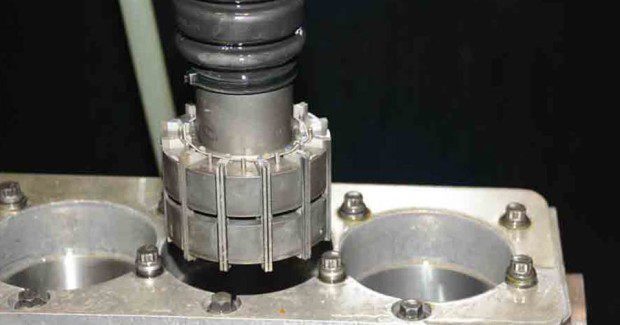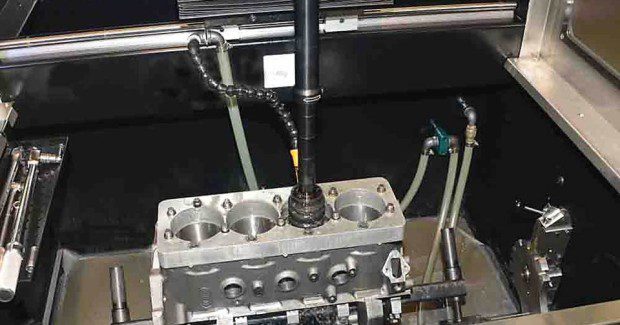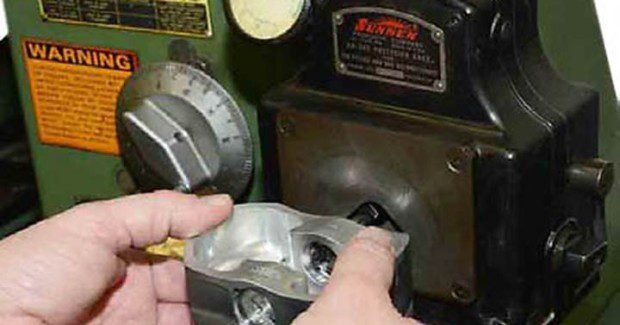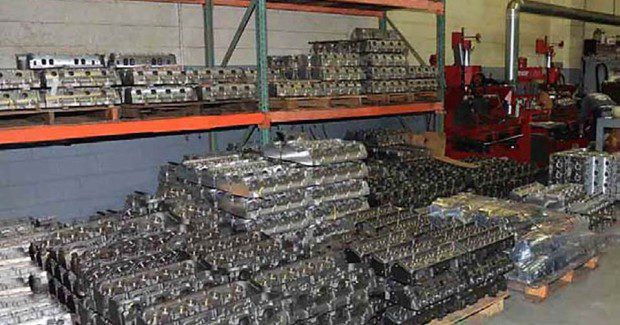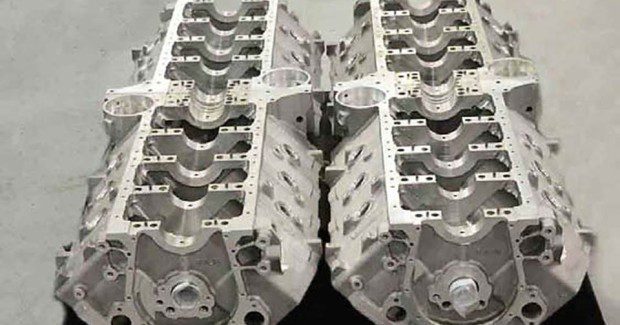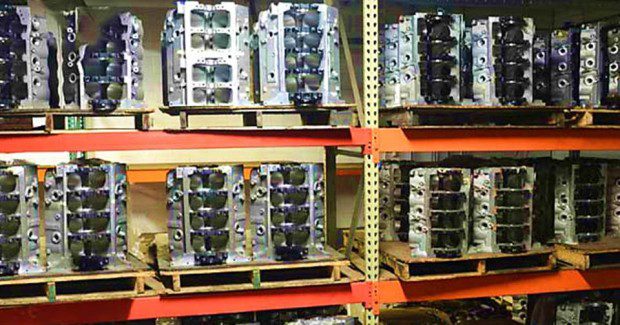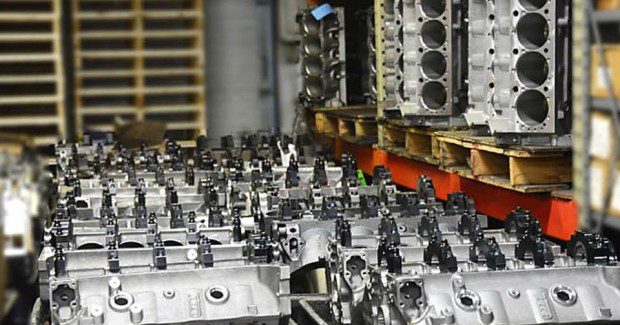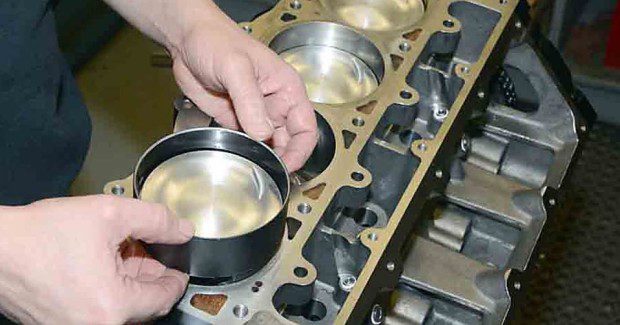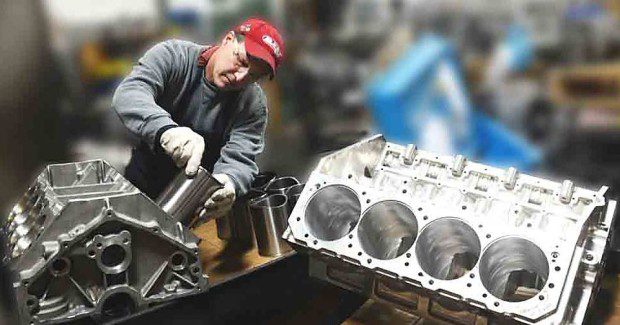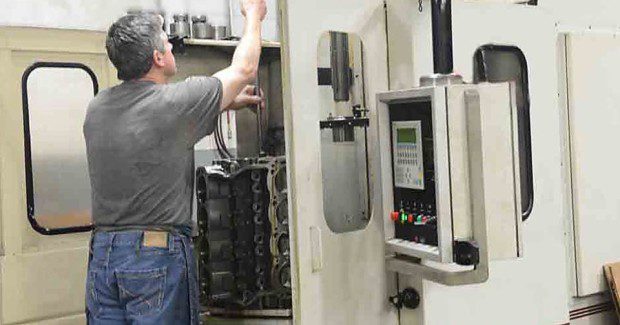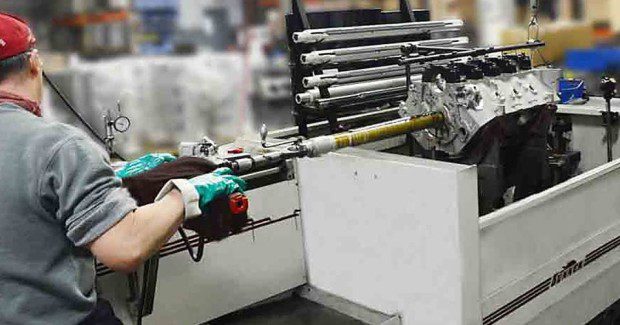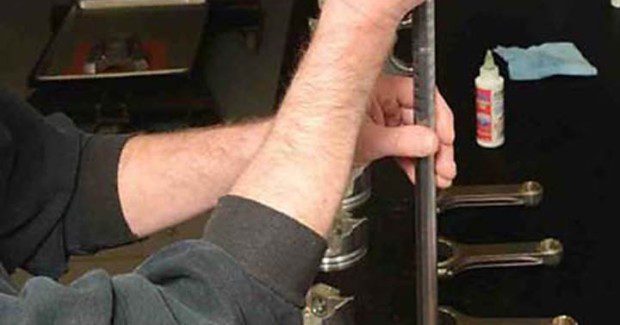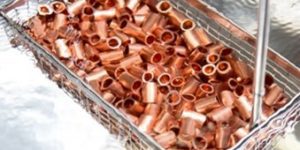A Chip Off the Old Block
Dart masters the “peaks and valleys” of custom engine block production with an advanced American-made Sunnen SV-20 flexible honing system that uses programmable control to replicate “best” engine parameters and produce expert results with minimal operator expertise.
Posted: August 5, 2014
“For a business to thrive, it must be able to negotiate the inevitable economic peaks and valleys. A world leader in manufacturing engine blocks for racing and high performance enthusiasts – as well as replacement blocks for a variety of Detroit V-8 engines – Dart Machinery Ltd (Troy, MI) uses its mastery of peaks and valleys, specifically in honing cylinder bores, to produce custom results with near-mass-production efficiency. Advanced honing provides a key differentiator for maintaining a competitive advantage and achieving greater efficiencies and flexibility in processing an ever-changing mix of blocks,” says Dick Maskin, the Dart founder and president.
A new SV-20 honing system from Sunnen Products Company (St. Louis, MO) enables high-precision, highly-flexible honing of a wide range of block designs and metallurgies in a single continuous process without the need for stone change, he reports. American-made in St. Louis, the SV-20 replaces a more expensive, European-built honing system that “just wasn’t a good fit for our production, not flexible enough,” says Maskin.
Maskin started Dart in 1981 in a two-car garage in Oak Park, a Detroit suburb, and has grown it into the manufacturing leader in racing and high-performance engine blocks, heads and other components. The company does its part to keep Detroit “Motor City” with both a technology center and manufacturing facility located in the metro area. Today 95 Dart employees make about 8,000 blocks and 16,000 heads a year for drag racing, circle track racing, road racing, and high-performance custom cars, as well as marine and industrial power applications.
A demonstration of the capabilities of an SV-20 Cylinder Honing machine.
”We produce custom in volume,” states Maskin. Blocks are manufactured to customer order in type and material, bore spacing, cam location, bolt pattern, deck height, lifter location, oil pan bolt pattern, metric or U.S. dimensions – “just infinite variation and specialization,” he says. Dart makes blocks in various grades of iron (cast to CGI) and in aluminum with iron-sleeved cylinder bores, including blocks machined from forged and heat-treated aluminum billets.
The manufacturing facility operates three shifts, six or seven days a week depending on production volume, with 26 large Makino CNC machining centers churning out blocks, heads and manifolds. Customers can choose between seven different base block designs covering big block and small block sizes, all evolved from NHRA pro stock V-8 experience. “That’s where all the technology comes from,” says Maskin, whose own engine creations achieved drag-racing’s first 300 mph quarter-mile run and four-second Funny Car elapsed time.
Applying that creativity to honing, Dart combines two advanced technologies – diamond honing abrasives driven with a programmable spindle, followed by profilometers to measure the peaks and valleys of cylinder surface finishes – to replicate “best” block finishes and ring seal. “Experienced racers have always had their favorite blocks, ones that ran better than others,” notes Maskin. “We’ve learned through experience that it was not the block that made the difference, but how your honing process worked for that exact block, while similar blocks might produce much less horsepower. Once you understand the finish you need from honing – and we know these numbers now thanks to profilometers – you can make the bad blocks good, too. We use honing to achieve the ideal Rvk (valley depth average), Rpk (peak height average), Rk (core roughness depth), and crosshatch to finish a block for a given application.”
“Honing is all about sealing the rings to the cylinder wall,” stresses Dick Maskin. “The key is valley depth. Too deep and you have too much oil in it, slowing the engine down with friction. Too little valley, and the rings can hydroplane across the valleys and you lose seal. Then, you have to run thicker oil. Unless oil can reside in the valleys, it sits on the cylinder wall and must be thick not to be torn off by the rings. We think valleys need to be in the mid to high 30 µm (.000030 in) to really seal a race engine strongly, and deeper in the mid to high 40’s for a more conventional engine.
“For some blocks using today’s steel rings, we hone for peaks of 12 µm to15 µm (.000012 in to 15 in) or smoother. When we turn the short block over manually with a wrench, the rings will knock the peaks down to 5 or less before we ever start the engine, but the valleys remain. We may not always take the peaks off during honing. If you ball-hone or sandpaper, thinking you’ll accomplish this, you’ll simply reduce valley depth and the engine won’t run as good. In our experience, if you go smoother on honing peaks and valleys, the finish won’t last as long. Starting with a rougher finish, the block is going to wear in and be sealed up so tight it will surprise you.”
Knowing the desired result, the honing process can be tweaked to achieve the result in any block, he says. “If you go from a 200 brinnel block of cast iron to a much tougher CGI (compacted graphite iron) block, you need to know how to achieve your finish numbers in the different materials,” says Maskin. “Finishes also must account for the type of fuel burned in the engine, which could be alcohol or natural gas.”
The SV-20 honing system gives Dart the flexibility to efficiently process any engine block in any material and hardness. “There is no typical production run for us,” notes Maskin. “We can put a new block on the SV-20, once the program is written, and no machine can make a cylinder rounder or straighter,” he states. “The finish is all based on programming. If you know where you want to go, you can get there.”
“Computer control has taken much of the black art out of honing,” he notes. “Machines like the SV-20 produce a finish and size that previously required a very talented machinist,” says Maskin. “If you have to hone different blocks with different material content, like we do, the newer equipment is significantly better.”
An advanced true-linear stroking system with 3.36 hp (2.5 kW) servo drive keeps the honing tool concentric with the bore throughout the full stroke length to produce a consistent diameter from top to bottom of the bore. The SV-20 can hone bores with inside diameters from 0.75 in to 8 in (19-200 mm). The machine’s work envelope of 36 in by 40 in (915 mm by 1,015 mm), front-loading design, and weight capacity up to 1500 lb (680 kg) combine for exceptional processing versatility.
Dart’s business also needs good cycle time, and the high-torque 5.5 hp spindle on the new machine delivers. “With the SV-20 and a new block you can take 6-8 thousandths out in less than a minute,” he reports. Two-stage diamond tooling – 150 and 600 grit – performs rough and finish honing without pause for stone change. This combination of stones allows Dart to get almost any surface finish, he says. Other productivity enhancements he notes are automatic size lock, dwell, and real-time bore profile display.
The PLC-controlled SV-20 utilizes an 8-inch industrial color touch screen with hand wheel to jog for fast setup and easy operator training. The computer control ensures automatic, consistent bore-to-bore geometry and finish, without constant adjustment by the operator. The control automatically calculates required spindle/stroker speeds, based on the operator’s desired crosshatch angle, or it will display a crosshatch angle based on the operator’s inputs for the spindle/stroker speeds. Variable speed control allows a much wider range of processing options and consistent crosshatch pattern, with automatic switching from roughing to finishing at one push of a button.
Dart uses other Sunnen machines, such as a CH-100 line hone, in its production, notes Maskin. And while the SV-20 has taken over most day-to-day honing work, an older machine may still find use for certain applications. “We have many Sunnen hone heads going way back, and in special situations our best machinists can do things with them we call ‘cheating.'”
For more than 30 years Dart has stayed on the leading edge of V-8 performance-block design and manufacture. With the new SV-20, it is honing that edge through superior piston-sealing precision and manufacturing efficiencies.
Definitions:
- Profilometer – an instrument used to measure a surface’s profile in order to quantify roughness. A contact Profilometer records a surface profile by moving a diamond stylus across a specified distance, with a specified contact force.
- Rk – The average core roughness depth based on the Rpk and Rvk measurements.
- Rpk – The mean height of peaks protruding from the roughness core profile.
- Rvk – The mean depth of the valleys protruding from the roughness core profile.
- Rz – The mean highest peak-to-valley measurement taken from five samples.
Sunnen Products Company, 7910 Manchester Road, St. Louis, MO 63143, 314-781-2100, [email protected], www.sunnen.com.

